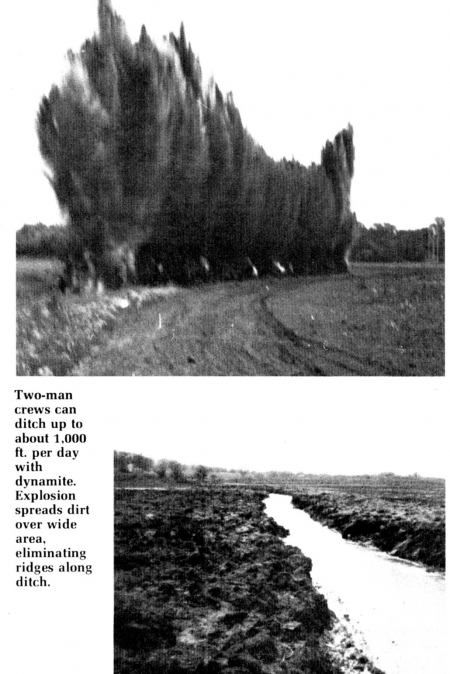
Want a drainage or irrigation ditch in a hurry? One of the fastest ways to put one in is by blasting.
"It's fast and simple and we can work in places that would be difficult for conventional ditching equipment," says Jerry Wilson, Woodward, Iowa. He's been in the blasting business for 11 years, doing all kinds of controlled blasting jobs, including demolition of old buildings or silos.
"We go anywhere in the United States," Wilson told FARM SHOW. "We blast out ditches, rocks, tree stumps and bridge piers. One of our most common jobs is to go inside elevators to loosen up fertilizer that has setup and become rock hard."
Wilson notes that ditch blasting works especially well for fields that are too wet to bring in dryland equipment. "In fact, it works best when the soil is moist. Right after frost is out of the ground in the spring is a good time for blasting a ditch," he points out. "The nice thing about a blasted ditch is that it has a nice V-shape. There is no ridge along the side because the explosion spreads the dirt over a wide area. The V-shape trench is self-cleaning from the action of the water, and it doesn't fill in with weeds and brush like a conventional, wide-bottomed ditch."
Blasting works better in heavy soils than in sandy ones, and any job has to be done when the soil is wet. Average ditches blasted out by dynamite are 3 1/2 to 4 ft. deep and 6 to 8 ft. wide. Average displacement is about 120 cu. yds. of earth for every 100 ft. of ditch. Wilson says he averages 600 to 1,000 ft. of ditch daily, depending on soil moisture and whether pasture, swamp or timberland is being ditched with dynamite.
"We're often called upon to demolish old silos without damaging the barn or other adjacent structures or equipment. We also have done a lot of river and creek channel straightening to help prevent flooding damage to crops."
Wilson has crews in different parts of the country, but he personally supervises all jobs. The explosive he uses most of the time is dynamite, but he does use some TNT and other types.
Everything is checked out scientifically before and during the blast, explains Wilson, who uses two sensitive seismographs to take blast readings. "There's also a lot of paperwork to a blasting job."
Wilson holds a federal license for blasting, and has to be licensed in each state in which he works. He also needs to get permits for storage of explosives.
